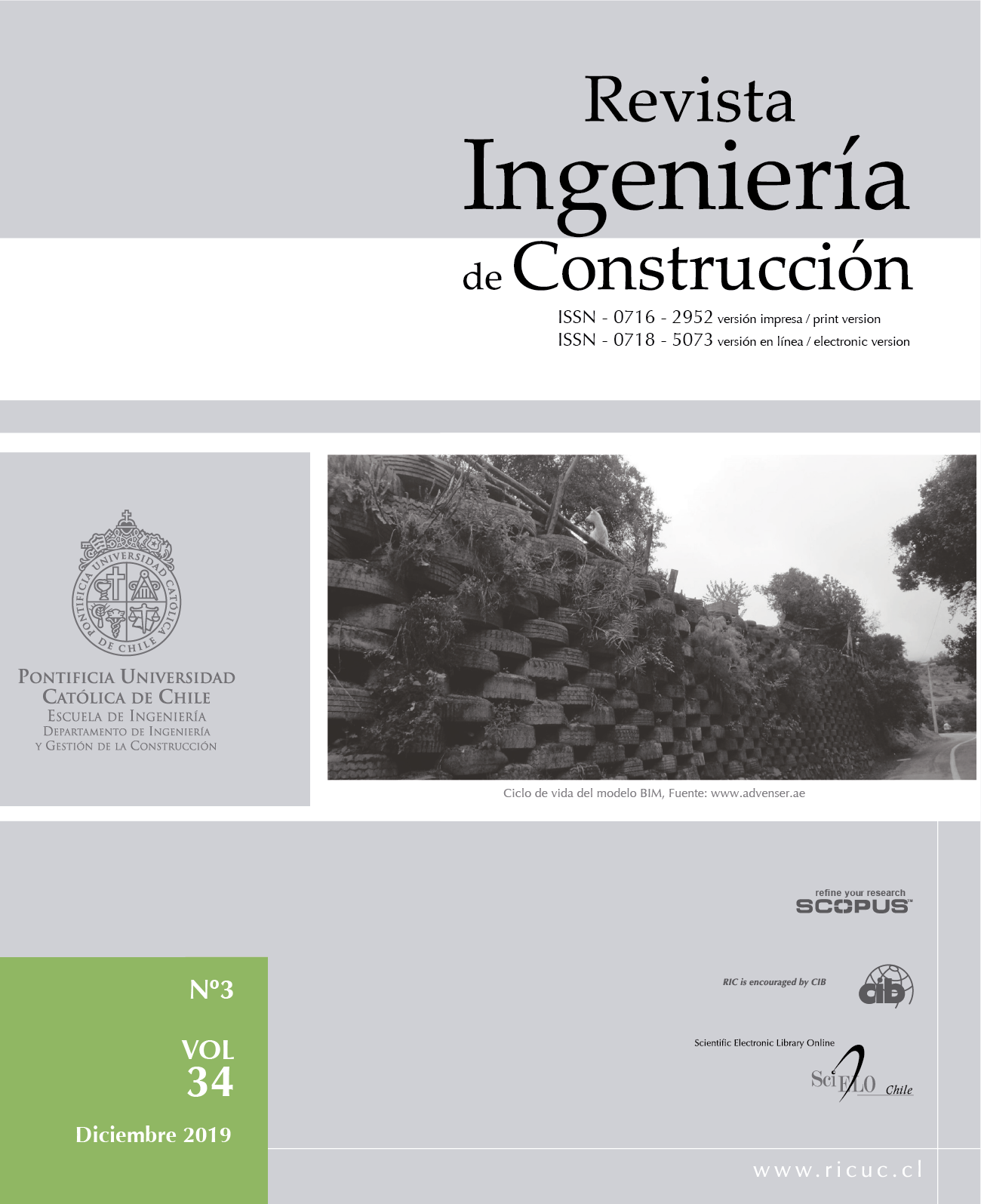Infrared thermography (IRT) to detect internal defects caused by xylophagous insects in bamboo culms
DOI:
https://doi.org/10.4067/S0718-50732019000300278Keywords:
Infrared thermography, bamboo, detection of internal defects, insect decay, non-destructive testingAbstract
Infrared Thermography (IRT) is a technique used in the inspection of constructive elements in buildings. It has a great potential for the investigation of pathological manifestations because it is a strictly non-destructive procedure that could be rapidly applied in fieldwork. This research analyzes the possibility of using active IRT to detect internal defects caused by xylophagous insects in bamboo culms, in order to apply it in the fieldwork for the inspection of pathological manifestations in buildings. In laboratory, samples of bamboo culms of Bambusa tuldoides and Phyllostachys bambusoides species were submitted to a thermographic experiment using a thermographic camera and FLIR B400 software. Subsequently, the potential for using this technique in the fieldwork was evaluated. The results point the limitations of both, technique and method used, to identify perforations of diameter less than or equal to 3 mm located in the inner wall of the bamboo culms.

